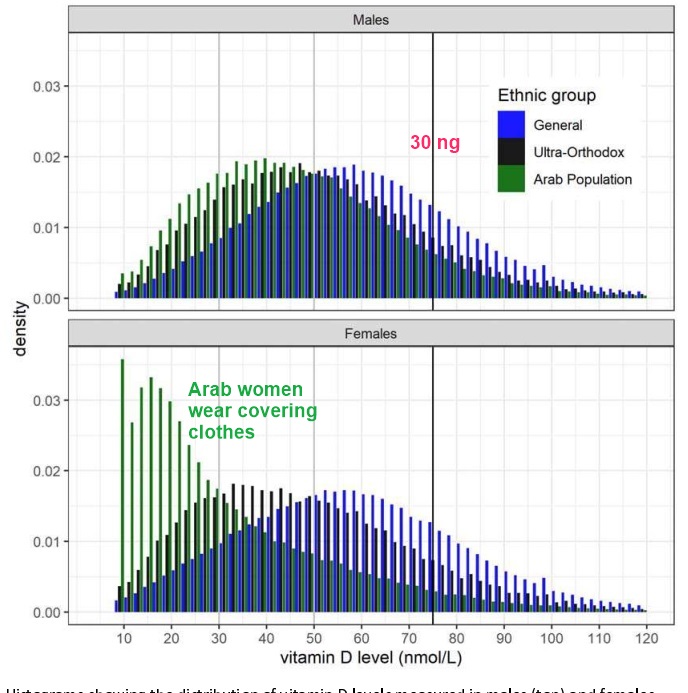COVID-19 increased 3.5 X if Ultra-Orthodox (cloth) Sept, 2020
The link between vitamin D deficiency and Covid-19 in a large population – preprint Sept 7


Deficiency = 12 ng
 Note: Masks over beards probably have decreased effectiveness--- 1. High Risk category listing contains the following{include}--- 1. Middle East and Vitamin D starts with{include}--- 1. Vitamin D Life pages containing CLOTH in title (21 as of Dec 2021){LIST()}
Note: Masks over beards probably have decreased effectiveness--- 1. High Risk category listing contains the following{include}--- 1. Middle East and Vitamin D starts with{include}--- 1. Vitamin D Life pages containing CLOTH in title (21 as of Dec 2021){LIST()}📄 Download the PDF from Vitamin D Life
BACKGROUND
Recent studies suggest a link between vitamin D deficiency and Covid-19 infection. In our population we observe major differences in Covid-19 incidence in ethnic groups and genders in each group.
METHODS
We carried out a population-based study among 4.6 million members of Clalit Health Services (CHS). We collected results from vitamin D tests performed between 2010 and 2019 and used weighted linear regression to assess the relationship between prevalence of vitamin D deficiency and Covid-19 incidence in 200 localities. Additionally, we matched 52,405 infected patients with 524,050 control individuals of the same sex, age, geographical region and used conditional logistic regression to assess the relationship between baseline vitamin D levels, acquisition of vitamin D supplements in the last 4 months, and positive Covid-19.
RESULTS
We observe a highly significant correlation between prevalence of vitamin D deficiency and Covid- 19 incidence, and between female-to-male ratio for severe vitamin D deficiency and female-to- male ratio for Covid-19 incidence in localities (P<0.001). In the matched cohort, we found a significant association between low vitamin D levels and the risk of Covid-19, with the highest risk observed for severe vitamin D deficiency. A significant protective effect was observed for members who acquired liquid vitamin D formulations (drops) in the last 4 months.
CONCLUSION
In this large observational population study, we show a strong association between vitamin D deficiency and Covid-19 occurrence. After adjustment for baseline characteristics and prior vitamin D levels, acquisition of liquid vitamin D formulations is associated with decreased risk for Covid-19 infection.
